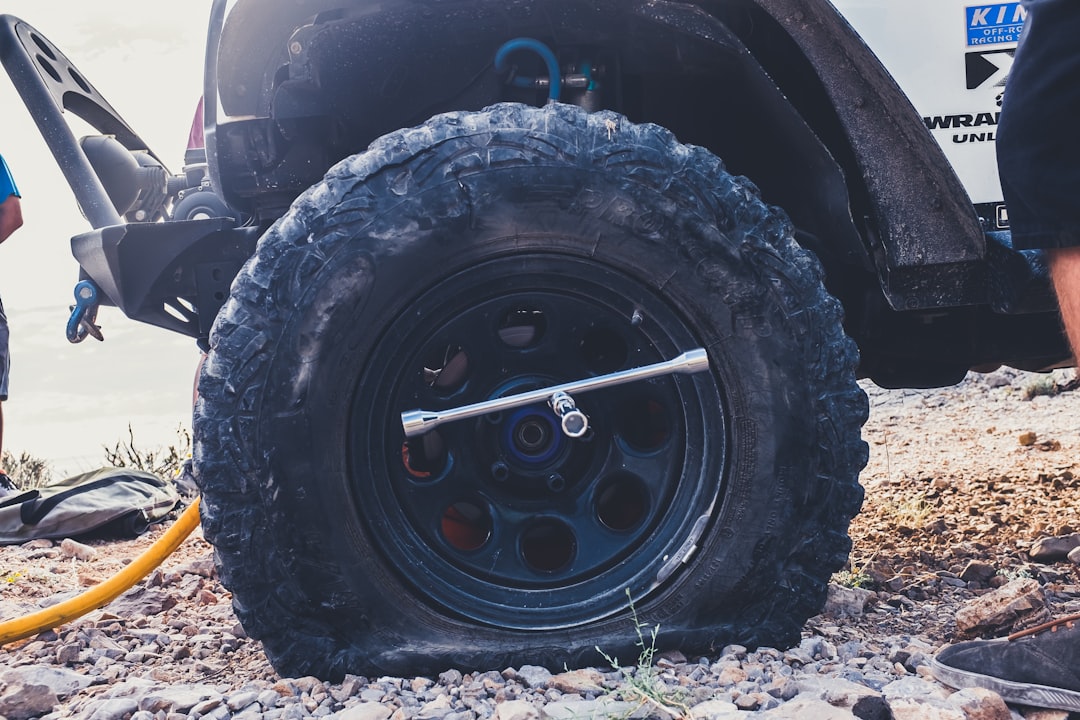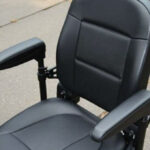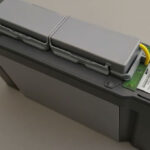How to Quickly Change Your Bicycle Tire
How to change a bicycle tire might seem like a daunting task, but with a little know-how, you can do it quickly and easily. Here’s a quick overview for those in a hurry:
- Remove the wheel from the bike.
- Pry off the tire using tire levers.
- Remove the old tube, inspect the tire, and check for punctures.
- Insert a new tube into the tire and partially inflate it.
- Reinstall the tire onto the wheel.
- Reattach the wheel to your bike and fully inflate the tire.
We’ll dive into each step to provide you with the confidence to change a flat tire anywhere, anytime.
Having a flat bicycle tire can leave you stranded, but it’s a problem you can quickly fix yourself with the right tools and steps. Usually, you’ll just need to replace the tube inside, but sometimes a new tire is necessary if it’s badly worn or damaged.
Chris Atkinson, an expert in the bike industry, once mentioned how easy it is to change a flat once you know how: “Come on, it’s an endurance sport in more than one way.”
Let’s go through how to get you back on the road swiftly.

Tools and Materials Needed
Before you start changing your bicycle tire, gather all the necessary tools and materials. Having everything ready will make the process smoother and quicker. Here’s what you’ll need:
Bike Pump
A bike pump is essential for inflating the new inner tube. Pumps come in different types, including hand pumps and floor pumps. A floor pump is usually easier to use and can reach higher pressures, but a hand pump is more portable. Make sure your pump is compatible with the type of valve on your inner tube.

Tire Levers
Tire levers are small, flat tools that help you pry the tire off the rim. They usually come in sets of two or three. Using tire levers makes it much easier to remove and reinstall the tire without damaging the rim or the tire itself.

New Inner Tube
You’ll need a new inner tube to replace the punctured one. Tubes come in various sizes, so make sure you get the correct size for your tire. The size is usually printed on the sidewall of the tire. It’s also a good idea to carry a spare tube with you when you ride, so you’re always prepared for a flat.

Types of Valves: Presta and Schrader
When buying a new tube, you need to match the valve type. There are two main types of valves:
- Presta Valve: These valves are narrower and have a small nut that you need to loosen to inflate the tube. They are commonly found on road bikes and some mountain bikes. You’ll need a pump or adapter that’s compatible with Presta valves to inflate these tubes.

- Schrader Valve: These are the same type of valves you find on car tires. They are wider and usually more robust. Schrader valves are common on mountain bikes and some hybrid bikes. Most bike pumps are compatible with Schrader valves, and you can also use a gas station air pump.

Additional Tips
- Carry a Presta-to-Schrader adapter if you have Presta valves. This way, you can use a gas station pump in a pinch.
- Patch Kit: Even if you have a spare tube, carrying a patch kit can be a lifesaver for multiple flats.
Now that you have everything you need, let’s move on to preparing your bike for the tire change.
Step-by-Step Guide on How to Change a Bicycle Tire
Preparing Your Bike
Lay your bike on its side or use a bike stand if you have one. This will keep your bike stable while you work on it. If you prefer, you can also turn the bike upside down, resting it on its handlebars and seat. However, be cautious as this might scratch the handlebars or seat.
Adjust your gears to the smallest ring if you’re removing the back tire. This will make it easier to take off the rear wheel. You don’t need to adjust the gears if you’re removing the front tire.
Removing the Wheel
Deflate the tire completely. Loosen the cap on the air valve and release the air. For Schrader valves, press down on the plunger inside the valve. For Presta valves, unscrew and pull up on the valve cap. For Dunlop valves, take off the cap and pull up on the air valve.
Loosen the nuts on the axle or use the quick-release lever. If your quick-release lever doesn’t come off after you turn it 180 degrees, keep turning it until you can remove it. If the nuts are stuck, you can spray them with WD-40 to make them easier to loosen.
Detach the brake cables if necessary. In many cases, opening the quick-release lever also detaches the brakes. If not, squeeze the calipers on the brakes to release the cables. Check your bicycle manual if you’re having trouble with this step.
Lift the wheel out of the frame. For the back tire, you may need to lift the bicycle chain out of the way.
Removing the Tire and Tube
Use a tire lever to release the tire bead from the rim. Hook the edge of the tire lever under the outer edge of the tire. Work a second lever clockwise around the tire to fully release it.
Pull out the tube from inside the tire. If your tire has a Presta valve, you’ll need to remove the nut on the stem first.
Inspect the tire for sharp objects like glass or metal that might have caused the puncture. Run your fingers along the inside of the tire to feel for anything sharp.
Inserting a New Tube
Partially inflate the new tube to give it a round shape. This will make it easier to insert into the tire.
Insert the valve stem into the hole in the rim first. Then, work the tube into the tire, making sure the entire tube is inside before proceeding.
Reinstalling the Tire
Press the tire back over the rim, starting at the valve and working your way around. Be careful not to pinch the tube between the tire and the rim. If it’s too tight to push the last section by hand, use the tire levers to pry the tire onto the rim.
Check for pinched tube by pushing against the bead and looking into the space between the tire and rim. Make sure the tube isn’t caught as this could cause another flat.
Inflate the tire slowly. As you do this, check to see that both sides of the rim are staying put. Go around the tire once more with your fingers and pinch the tire inwards. Inflate the tire to the recommended pressure listed on the tire sidewall.
Reattaching the Wheel
Tighten the quick-release lever or axle nuts. Make sure they are secure but not overly tight.
Reconnect the brake cables if you had to detach them. Ensure they are properly aligned and functional.
Ensure the wheel spins freely and is centered between the brake pads. Give it a spin to check for any wobbles or misalignment.
Now that your tire is changed, you’re ready to hit the road again! Next, let’s look at some tips and tricks for a smooth tire change.
Tips and Tricks for a Smooth Tire Change
Changing a bicycle tire can be straightforward if you follow some handy tips. These will help make the process smoother and quicker.
Use Tire Levers
Tire levers are essential tools for changing a tire. They help you pry the tire off the rim without damaging it. Always use plastic tire levers as metal ones can damage the rim or the tire.
Pro Tip: Keep at least two tire levers with you. If one lever is not enough, the second can help you work around stubborn spots.
Avoid Metal Tools
Avoid using metal tools like screwdrivers or knives to remove or replace the tire. Metal tools can puncture the new tube or damage the rim. Stick to plastic tire levers and your hands.
Check for Sharp Objects
Before inserting the new tube, inspect the tire for sharp objects like glass or metal shards. Run your fingers along the inside of the tire to feel for anything that could cause another puncture.
Story from the road: One cyclist shared, “I once fixed a flat only to get another one a mile down the road. Turned out, a tiny piece of glass was still in the tire.”
Proper Inflation
Inflating your tire to the correct pressure is crucial. Over-inflating can cause a blowout, while under-inflating can make your ride sluggish and more prone to flats.
Check the recommended pressure on the tire sidewall. Use a reliable pump with a gauge to ensure you hit the right PSI.
Fact: For a rider weighing 170 lbs, 95 PSI is often ideal for 25c tires.
Practice Makes Perfect
Practice changing your tire at home before you find yourself stranded on the road. It’s a skill that gets easier with repetition.
Quote from a seasoned rider: “It’s easy but intimidating. The hardest part is not getting dirty.”
Keep Spare Parts Handy
Always carry a spare tube, tire levers, and a pump when you ride. You never know when you might need them.
Stat: According to a Reddit user, “For a beginner, it can take 2 to 2.5 hours to replace one tire.” Practicing at home can cut this time significantly.
By following these tips, you can ensure a smoother, quicker tire change, saving you time and frustration on the road.
Next, let’s dive into some common mistakes to avoid when changing a bicycle tire.
Common Mistakes to Avoid
Making mistakes when changing a bicycle tire can lead to more flats or even damage to your bike. Here are some common pitfalls to watch out for:
Over-Inflating the Tube
One of the biggest mistakes is over-inflating the tube. Too much air pressure can cause a blowout, especially on a hot day when the air inside the tube expands.
Tip: Always check the recommended PSI on the sidewall of your tire. For example, a rider weighing 170 lbs typically uses 95 PSI for 25c tires.
Using Sharp Tools
Avoid using sharp tools like screwdrivers or knives to pry the tire off the rim. These can easily puncture the new tube or damage the rim.
Always use plastic tire levers to remove and replace the tire. Metal tools can cause more harm than good.
Not Checking for Punctures
Before inserting the new tube, it’s crucial to inspect the tire for sharp objects. Run your fingers along the inside of the tire to feel for any debris like glass or metal shards.
Story from the road: “I once fixed a flat only to get another one a mile down the road. A tiny piece of glass was still in the tire,” shared a cyclist on Reddit.
Improper Bead Seating
Ensuring the tire bead is properly seated on the rim is essential. If the bead isn’t seated correctly, you risk pinching the tube, which can lead to another flat.
Tip: After installing the tire, push against the bead and look into the space between the tire and rim to make sure it’s clear. Inflate the tire slowly and check for any uneven spots.
By avoiding these common mistakes, you can make your tire-changing process quicker and more effective, ensuring a smoother ride.
Next, let’s address some frequently asked questions about how to change a bicycle tire.
Frequently Asked Questions about How to Change a Bicycle Tire
How to change a bike tire step by step?
Changing a bike tire is a straightforward process, but it does require some specific steps and tools. Here’s a quick guide:
-
Prepare Your Bike: Lay your bike on its side or use a bike stand. Adjust the gears to the smallest ring if you’re working on the rear tire.
-
Remove the Wheel:
- Quick-Release Lever: Open the quick-release lever by turning it 180 degrees. If it doesn’t come off, keep turning until it does.
- Brake Cables: Detach the brake cables if necessary by squeezing the calipers to release the cables.
- Deflate the Tire: Loosen the cap on the air valve and release all the air.
-
Remove the Tire and Tube:
- Use a tire lever to pry under the tire bead and hook it onto a spoke.
- Insert a second tire lever and slide it around the rim to release the tire.
- Pull out the tube and inspect the tire for any sharp objects.
-
Insert a New Tube:
- Partially inflate the new tube so it holds its shape.
- Insert the valve stem through the rim hole and work the tube into the tire.
-
Reinstall the Tire:
- Press the tire bead back over the rim. Use tire levers if necessary, but be careful not to pinch the tube.
- Check for any pinched sections and ensure the bead is seated properly.
-
Reattach the Wheel:
- Tighten the quick-release lever and reconnect the brake cables.
- Ensure the wheel spins freely and is centered between the brakes.
Are bike tires easy to replace?
Yes, bike tires are generally easy to replace if you follow the correct steps and have the right tools. The process involves:
- Replacing the tube: Most flat tires can be fixed by simply replacing the inner tube.
- Inspecting the tire: Always check the tire for any debris or sharp objects that could cause another flat.
- Using the right tools: A bike pump, tire levers, and a new inner tube are essential tools for this task.
Can I change a bike tire myself?
Absolutely! You can change a bike tire yourself with the proper technique and tools. Here are some DIY tips to help you:
- Use Tire Levers: Always use plastic tire levers to avoid damaging the tire or rim.
- Proper Technique: Follow the step-by-step guide to ensure you don’t miss any crucial steps.
- Common Challenges: Be prepared for common challenges like tight tire beads or difficulty in seating the tire properly.
By understanding these basics, you can handle a flat tire confidently and get back on the road quickly.
Conclusion
Changing a bicycle tire might seem daunting at first, but with the right tools and a bit of practice, it becomes a simple task. At Doot Scoot, we believe in empowering our community with the knowledge and skills needed for sustainable urban transportation.
Doot Scoot is dedicated to promoting eco-friendly transportation solutions. We understand that biking is not just about getting from point A to B; it’s a lifestyle choice that benefits both the individual and the environment. By providing expert guides and resources, we aim to make biking more accessible and enjoyable for everyone.
Our expert guides are designed to help you with everything from choosing the right eBike to maintaining it. Whether you’re a beginner or an experienced rider, our step-by-step instructions and practical tips make it easy to keep your bike in top shape.
We also value community support. The biking community is a fantastic resource for sharing experiences, tips, and advice. At Doot Scoot, we encourage you to engage with fellow riders, ask questions, and share your own knowledge. Together, we can build a supportive network that fosters a love for biking and a commitment to eco-friendly living.
For more information, expert guides, and community support, visit Doot Scoot. Join us in making urban transportation more sustainable and efficient.
By understanding how to change a bicycle tire, you can confidently handle any flat tire situation and continue enjoying the benefits of biking. A little preparation goes a long way in ensuring a smooth and safe ride. Happy biking!










